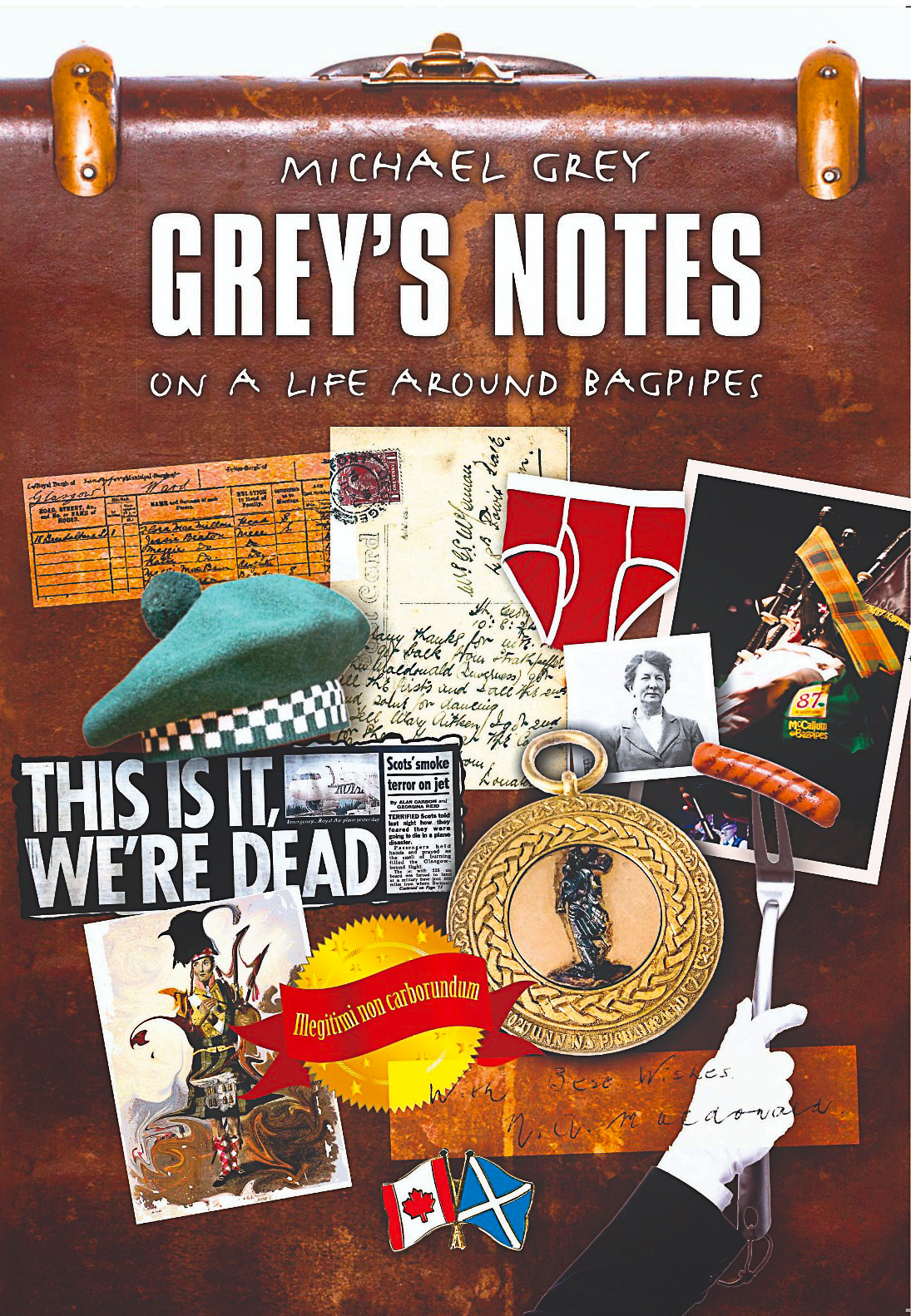The Secret to Never Missing Technique
May 9, 2007 on 9:42 pm by Michael Grey | In Technique | 9 CommentsSo, when it comes to bagpipe music, it’s “all technique all the time”. With nine notes, no rests, no sharps, no flats, no dynamics, technique is pretty much all we have to create rhythm. We’re not so big on understated embellishments.
OK. So the secret to reliable technique: first, it’s a given that you practice hard.
Here, though,is the super-lucky-hyper-magnetic secret: the ‘d’ gracenote. Yep, that lowly mid-chanter blip, the ‘d’ gracenote.
Consider the bedrock of Highland bagpipe technique: ‘b’ and ‘c’ doublings, tachums, leumluaths, taorluaths, crunluaths, ‘g-d-e’ triplets, what’s the common thread? There’s no question: the ‘d’ gracenote.
When we “miss” technique, or under-execute a ‘d’ gracenoted embellishment it’s more often than not the ‘d’ gracenote that has under-performed or misfired.
It makes good sense to me that we isolate this gracenote and really work the muscles that create the sound. I’ve always done this. It seems to work for me.
So what to do?
Sound large, oversized ‘d’ gracenotes on every bottom hand note that you can (not floppy, but exaggerated versions of the gracenote with a healthy degree of tension, or crispness – never tight, by the way).
Start with a chunky ‘d’ gracenote on ‘c’, follow with ‘b’, and on to low ‘a’ and low ‘g’.
Repeat back up to ‘c’. Repeat this up-down sequence slowly and correctly a dozen times.
Once you have mastered this mix it up a bit by increasing tempo and, if you really get ambitious, different sequences of the sub ‘d’ notes.
Follow this approach as a regular part of your practice schedule and it’ll be a cold day at Glenfinnan when you ever chance missing technique again. Guaranteed.
M.
9 Comments
Sorry, the comment form is closed at this time.
Dunaber is using WordPress customized and designed by Yoann Le Goff from A Eneb Productions.
 Entries and comments
feeds.
Valid XHTML and CSS.
Entries and comments
feeds.
Valid XHTML and CSS.



I am a decent amateur piper. On of my biggest problems is consistency of my embellishments. The Strathspey that I am competing with this year is Cabar Feidh. All is well when I play it with the exception of going from the high g to the d throw. The d throw is the issue. I seem to get it right half of the time. I’ve done the exercise mentioned above and for the past couple of days and things are coming out much better. It seems to be working.
Great article, thanks for the advice,
Reid
Comment by Reid — May 16, 2007 #
Thanks, Reid! M
Comment by mike — May 16, 2007 #
I started to wonder about two, or three years ago, if I didn’t HEAR the way I played technique a little bit off what actually SOUNDED. I even recall a small recital that you (and Bob) played in Winnipeg. I remember you playing what seemed to me (then) ‘large’ ‘d’ gracenotes.
Now, I am not exactly stupid, but sometimes, these things take a long time to ‘settle’ in. By hanging around some positive influences here in Victoria last year, and by listening to A LOT more solo recordings (as opposed to band recordings), I started to make some very fundamental changes. In terms of actual playing, I came to two equally important realizations:
1) Fingers move at the joint. They do not require much force at all – in fact, using too much force (especially for a relatively ‘strong’ individual like myself) can be detrimental.
2) Opening up bottom hand execution (by ensuring a strong, meaty ‘d’ gracenote) has an immeasurable effect on one’s playing. It helps to ‘even out’ embellishments throughout one’s playing, and serves to improve the degree of consistency that one enjoys.
By taking the time to make these observations (and also to spend a great deal of time playing 6/8 marches) I have begun to realize an immeasurable difference in regards to my relaxation when playing, the quality of my performances, and my overall standard of play. Not only that, by my tempo contro, rhythm, etc, has all improved as a result. All of last year, my comments (and in some cases, results) kept getting better, and better (although I did not play a large number of contests).
Also, in teaching, I have been able to really drill this into the kids at the cadet camp last summer. One of the Staff Cadets in particular, was much like me – good hands, but played ‘jammy’ and moved off the beat as a result. He had a few decent showings in Grade 4, but nothing consistent. I worked with him all summer, just enforcing the points that I had learned. I should note that he has been a student of well-known player for a couple of years, and I am sure that has more to do with his successes … but by his own admission, this helped to improve the consistency of his playing and his results. He won all four Grade 4 events at the Mini-Gatherings (a feat that has not been accomplished in those events in recent memory). He moved to Grade 3, and won the Aggregate at his first games (Comox). His next games, Victoria, he missed out in one event (but received great comments), and was second in the Jig.
To make a long story short, these are a couple of real examples of what you are talking about!
At any rate, I won’t get much of a chance to play this year – I finished my second degree in April, my wife is pregnant, and I am entering a Post-Degree Professional Program in Secondary Education in July. I am aiming to do Calgary/Canmore this year, and that is all. Next year, however, I hope to make it to all of the BC Games.
Thanks for reifying what I have been contemplating for a long time!
Comment by GregorBurton — May 29, 2007 #
“Jammy” technique! That’s a new phrase for me, Gregor! Thanks for sharing your excellent insight. Mike
Comment by mike — May 29, 2007 #
Mike
What are your thoughts on Gregor’s observations about using 6/8 marches as exercises in technique, especially the D gracenotes?
I’ve always been taught that the G gracenote is paramount, especially as it pertains to lining up the embellishments/phrasing with the beat.
In the last few years, I’ve seen fewer students (myself included) learning 6/8 marches, possibly b/c they aren’t typically found on solo entry forms, or because the band only has 2-3 ‘standard’ 6/8s that are played.
Maybe if students mastered 6/8s that are full of D gracenotes (eg: Donald MacLean of Lewis) they would see their technique improve?
Thoughts?
JEFF
Comment by jkruske — June 12, 2007 #
Thanks for your note, Jeff.
I think in terms of “lining up” technique it still might be said the ‘d’ gracenote is the technical plum line. Like solid posts supporting a strong fence (holes well dug and cemented) the ‘d’gracenote ensures so much of our technique is balanced and in place. I’d say it’s the light or missed ‘d’ gracenote and resulting missed – and ill-timed – embellishment that creates rythmic offsets and and phrasing missteps.
Yeah, the ‘g’ is important – not sure about paramount. Try playing a simple tune complete but minus the ‘g’ gracenotes; then try the same without ‘d’ gracenotes. Suggest the tune suffers more from the loss of ‘d’ gracenotes (there’s today’s wierd piping challenge!)
6/8 march playing that really swings and moves the feet forward is a dieing skill, it seems to me. I don’t connect ‘d’ gracenote proficiency to 6/8 marches particularly – that’s just me. But agree, practicing DM of Lewis until it was right would sort out most ‘d’ gracenote troubles in other tunes! M.
Comment by mike — June 12, 2007 #
My favourite D Gracenote excercise has to be playing Athole Cummers. I find a weakness in my playing where i need to play a doubling or “shake” on B coming from the top hand – ie High A, D, B Doubling and E gracenote to Low G. Coming from a High G start is even harder. Strengthening the D Gracenote and spending more time sounding the B before and after it really helps me, but i can still have problems on a cold day with this one for some reason. Perhaps its due to tightening muscles etc due to cold/ nerves. It seems it gets better when i deliberately make the D gracenote huge.
Comment by Greigc1 — June 14, 2007 #
Interesting. In the example you give I know a common fault is to shorten the ‘d’ to smithereens and sound a super tight ‘b’ doubling. Thanks, Greig. M
Comment by mike — June 14, 2007 #
Just to clarify: the issue with the ‘d’ gracenote, and 6/8 march playing are not intrinsically linked (although, they are interconnected). For me, paying attention to ‘d’ gracenotes (most importantly) and playing more 6/8’s (secondarily) were useful in helping me open up my playing.
Cheers!
Comment by GregorBurton — June 14, 2007 #